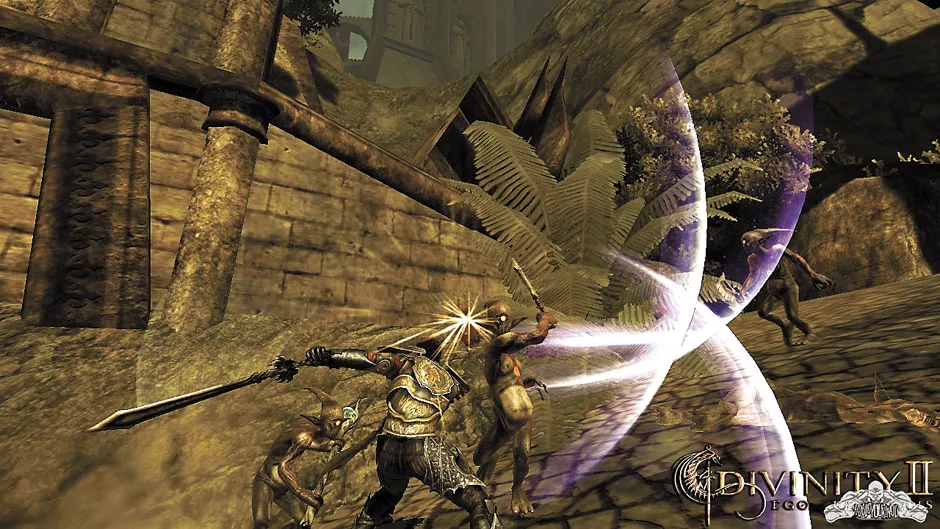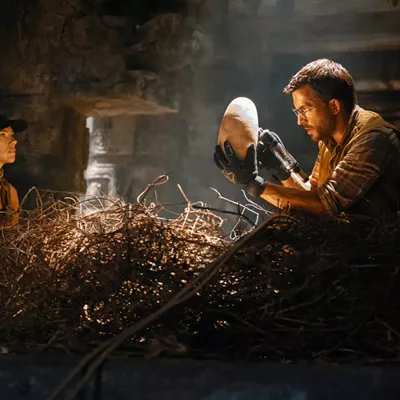There are two sides to every story. My life in Divinity II tells a part from both sides of the tale of Rivellon. I was trained in the arts of the Dragon Slayer. Using powers as mundane as swordsmanship and as arcane as mind-reading, we scoured the land seeking to eradicate the ancient Dragon Knights.
Holdovers of ancient magic, the Dragon Knights were masters of both land and sky, able to take either human or dragon form. They were fearsome, legendary beings who had once betrayed the Divine of Rivellon, allowing for the rise of an ancient evil that we — fools — had forgotten.
Divinity II allows me to grow comfortable in my role as Dragon Slayer. I explore a glowing, picturesque corner of Rivellon, hacking apart goblins and rooting out corruption among the countryside militia. I creep through caves that glow blue with the light of phosphorescent fungi, and battle ghosts and skeletons in magical laboratories locked deep beneath churches.
But then a meeting with the last surviving Dragon Knight transforms me from a dragon killer into a Dragon Knight myself, and I find myself the only being in Rivellon with the power to stop the coming of our world’s dark fate.
Divinity II blurs the boundaries between good and evil, between dragon and human, and between the categories that limit most role-playing games. While the game possesses the three basic categories of offense — melee, ranged combat and magic — I am free to choose my own path between them all, building a character who is unconstrained by fantasy conventions even as he draws on all the iconic powers that the genre affords.
The ability to change my form and take flight moves the combat into three dimensions. And the powers of the Dragon Knight allow me to develop myself into a lord of the land, complete with a stronghold full of researchers and minions to do my bidding. Far from being a mere role-playing game, Divinity II is an immersive fantasy — a multi-layered work of imagination through which I am free to move seamlessly.
THE GOOD: The detail in Divinity II is awesome. The game expands not only through the main storyline, but also through citizens’ requests, overheard conversations, found notes, unguarded thoughts… Landscapes sprawl in glittering detail, from battle-blasted plains to shade-dappled forests. Creatures range from minute rodents to towering monstrosities. When it works, this is a game that transcends the basic concepts of good and evil, winning and losing, standing and soaring.
THE BAD: Although its ambition is commendable, Divinity II’s technical failures are ruinous. Graphics constantly jitter and the entire screen stutters. And the save-game system — a vital component in such a vast game — is infected with faulty programming and erratic bugs. Numerous times I found myself unable to load a previously saved game. Sometimes I returned to the game only to fi nd that it had changed my inventory, locked me out of previously opened doors, or erased some hard-won experience.
THE BOTTOM LINE: Divinity II may be the most awe-inspiring RPG since Oblivion, but its glitches, too, are on an epic scale.














